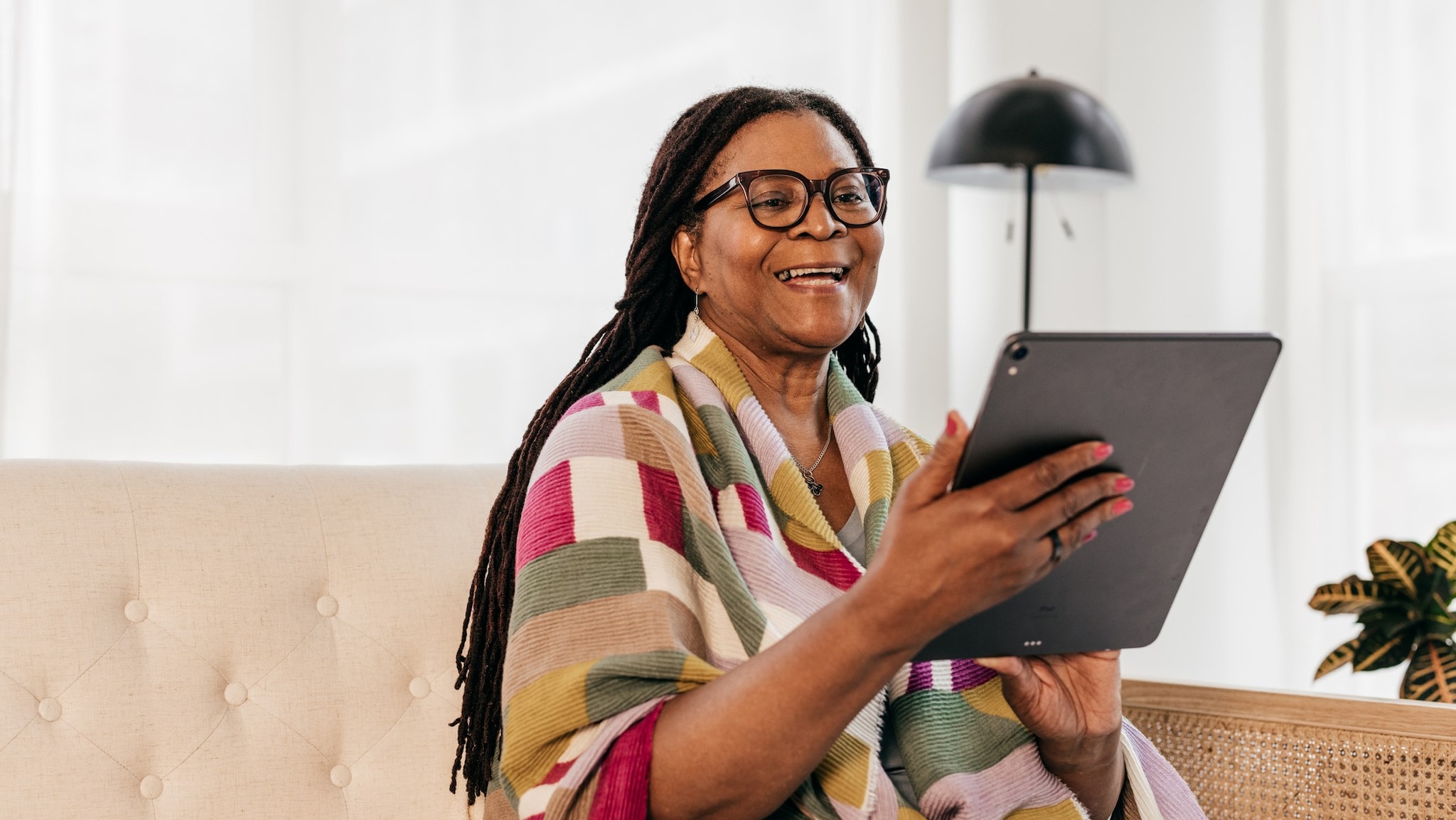Key points
DSMES services can’t wait, especially during times of emergency. That’s where telehealth can play an important role. Referrals from doctors for DSMES via telehealth allow patients to receive the critical care they need with added convenience. FInd out more in the success stories below.

Critical connection through telehealth
During an emergency or due to life circumstances, people may not be able to make it to in-person health care appointments. This may make it more challenging for people with diabetes to manage their health.
That’s where telehealth comes in. Referrals from doctors for DSMES via telehealth help patients receive the critical care they need. Through DSMES, diabetes care and education specialists can connect with patients and help reduce their stress. They can provide answers to patients' critical questions to help them better manage blood glucose, blood pressure, and cholesterol.
Patients can take advantage of the many benefits of telehealth services, regardless of circumstances. Telehealth options include:
- Videoconferencing.
- Telephone.
- Texting.
These alternatives provide the same life-saving benefits as in-person visits with added convenience for participants. Read on for success stories of DSMES participants who used telehealth.
April's story

April has type 2 diabetes, and when she found out she was pregnant her doctor referred her to DSMES. She had a virtual visit with diabetes care and education specialist Hannah. Hannah taught April how different foods and physical activity affect her blood sugar. During the visit, April confided in Hannah that she wasn't taking her insulin because she couldn't afford the prescription.
Hannah worked with April's pharmacist and connected April to a patient assistance program. April received coupons to help lower the cost of insulin to a price that April could afford. In just a few months, April’s blood sugar decreased over 200 points, and it keeps improving. April is grateful for DSMES services and her diabetes care team.
William's story

William was diagnosed with type 2 diabetes when he was 18 years old. He used medicine to help maintain his blood sugar levels. As he got older, it became harder to manage his diabetes. When William went on an insulin pump several years ago, he received a referral for DSMES. This was the first diabetes education William had ever received.
William met Casey, a diabetes care and education specialist, through the diabetes care center in South Carolina. Everyone at the center, especially Casey, was instrumental in William's health improvement. Casey helped William understand his diabetes and taught him how to maintain a healthy lifestyle. William said, "Without the diabetes center, I would be in trouble."
Mary's story
Mary (not pictured) was diagnosed with type 1 diabetes after going to the hospital because of diabetic ketoacidosis (DKA). DKA is a serious complication from diabetes. It happens when the body produces acids called ketones, which can build up to dangerous levels in the body.
Mary's doctor gave her a referral for DSMES. Diabetes care and education specialists Susan and Janet reached out to Mary to help her learn about insulin, insulin pumps and pens, and continuous glucose monitors. They taught Mary about healthier food choices and carbohydrate counting, and they even shared recipes. And importantly, they showed Mary how to apply for financial assistance through the proper channels.
Everyone at the South Carolina diabetes center who worked with Mary was knowledgeable and professional. "I have a full support team that set me up for success with a healthy lifestyle. A very big thank you to all who have helped me on my journey," Mary said.
Tess's story
Tess (not pictured) was diagnosed with gestational diabetes (diabetes during pregnancy). With young children and a husband who travels, Tess needed a better solution to in-person doctor appointments.
Telehealth enabled Lori, a diabetes care and education specialist, to talk with Tess at home while her children were asleep. Lori was able to virtually provide Tess important information on how to check her blood sugar and count carbohydrates. "I'm very thankful for Lori and the services she provided," Tess said.
